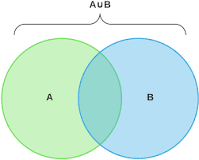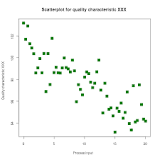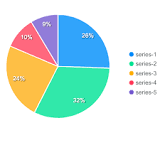![]()
![]()
![]()
Use LEFT and RIGHT arrow keys to navigate between flashcards;
Use UP and DOWN arrow keys to flip the card;
H to show hint;
A reads text to speech;
34 Cards in this Set
- Front
- Back
- 3rd side (hint)
|
Benefits of Collaboration |
Larger studies- can get done more efficiently A range of expertise- more scientists bring more perspective More money- funding may be provided Decreasing effects of bias- reduce the impact of bias on work |
There are 4 (that we’re taught) |
|
|
First atomic model (name:made by:year) |
Solid sphere:John Dalton:1803 |
Name - has a shape in the name Made by- J... D..... When- 18.. |
|
|
2nd atomic model name:made by:when |
Plum pudding:JJ Thomas:1904 |
Name- has a fruit in the name Made by- primary school snack + the name of a famous childhood train When- 19.. |
|
|
Observation |
Normal-the action or process of closely observing or monitoring something or someone Scientific- This refers to observing results (you may observe bubbles forming in a chemical reaction) |
Not to be mixed with inference |
|
|
Inference |
a conclusion reached on the basis of evidence and reasoning. |
not to be mixed with observation |
|
|
Reliability |
-Reliability is a property of any measure, tool, test or sometimes of a whole experiment. It's an estimation of how much random error might be in the scores around the true score. |
|
|
|
Accuracy |
the accuracy of an experiment is how close the final result is to the correct or accepted value. The closer it is, the more accurate the experiment. |
|
|
|
Validity |
-this refers to how well a scientific test or piece of research actually measures what it sets out to, or how well it reflects the reality it claims to represent. |
|
|
|
Independent variable |
-an independent variable is defines as the variable that is changed or controlled in a scientific experiment |
|
|
|
Dependent variable |
- a dependent variable is a variable whose value depends upon independent variable s. The dependent variable is what is being measured in an experiment or evaluated in a mathematical equation. |
|
|
|
Controlled variables |
-are points of the data that are kept the same and do not differ. e.g the room temp or the equipment used |
|
|
|
-Venn diagram (image is used so describe what it looks like) |

- |
|
|
|
Qualitative |
Referring to results gathered by senses (leaves room for human error) |
|
|
|
Quantitative |
Referring to evidence gathered using numbers |
|
|
|
Scatter graph |

-a graph where a series of dots represents the data |
|
|
|
Reduction |
-the act or process or an instance of reducing |
|
|
|
Hazard |
-a hazard is an agent which has the potential to cause harm to a vulnerable target. |
|
|
|
Scientific Law |
-a generalized rule to explain a body of observations in the form of a verbal or mathematical statement. Scientific laws imply a cause and effect between the observed elements and must always apply under the same conditions. |
|
|
|
Scientific Theory |
-a scientific theory is a well-substantiated explanation of some aspect of the natural world that is acquired through the scientific method and repeatedly tested and confirmed, preferably using a written, pre-defined, protocol of observations and experiments. |
|
|
|
Trends |
-A pattern in a graph, (an upwards or downwards shift in a data set overtime). |
|
|
|
Outliers |
-is a data point that differs significantly form the rest of the data |
|
|
|
Risk assessment |
-Table that shows risk (include what type of risk, how to prevent and likelihood of the risk occurring) |
|
|
|
Hypothesis |
(i predict) that.... (do not write "i predict" but use it as a prompt to start your sentence) |
|
|
|
Inference |
-must be a cause and effect statement that takes the observation and helps to try and understand what was observed |
|
|
|
Aim |
-the point of the experiment (to see if water puts out a flame) |
|
|
|
Method |
-Is the order of what you are doing (each step on a separate line and must start with a doing word e.g Measure, record) |
|
|
|
Human error |
-An error which occurs because of human involvement |
|
|
|
Systematic error |
- an error which occurs because of the machine being used. |
|
|
|
Experimental limits |
-this refers to things that cannot be tested because of limitations. (an inoculation experiment done at a school would not be that accurate because of lack or professional equipment) ( an experiment that cannot go ahead because of lack of funds) |
|
|
|
Pie chart (image is used so describe what it looks like) |

|
|
|
|
Where is the Y variable on a graph? |
-Vertical axis |
|
|
|
Where is the x variable on a graph? |
- Horizontal axis |
|
|
|
What information goes on the Y axis? |
-Independent |
|
|
|
What information goes on the x axis? |
-Dependent |
|

